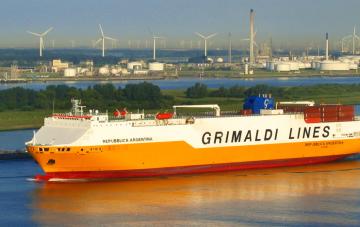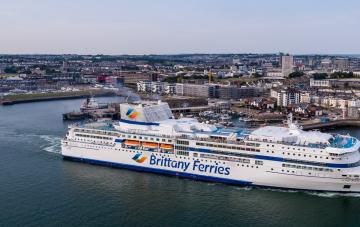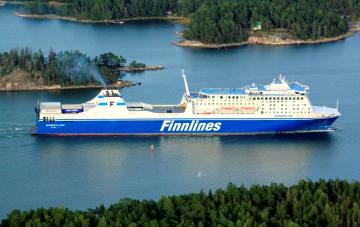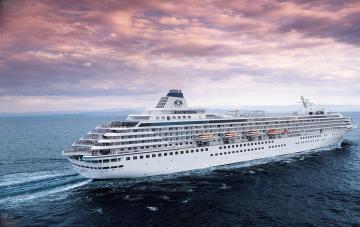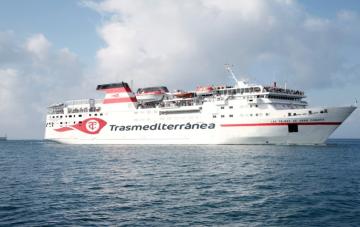Navios e cruzeiros tornaram-se muito populares, pois muitas pessoas os visitam anualmente. Portanto, certas regras e mudanças foram introduzidas, tanto no nível do Governo quanto no nível do motor, para tornar as viagens mais seguras e confortáveis.
Com o avanço da tecnologia e dos motores, muitas coisas se tornaram possíveis e acessíveis para pessoas comuns em todo o mundo. Enquanto todos nós gostamos do avanço da tecnologia e das novas oportunidades que nos são oferecidas, algumas questões muito naturais geralmente são despertadas. Essas questões surgem principalmente quando vemos algo agindo contra a lei da física.
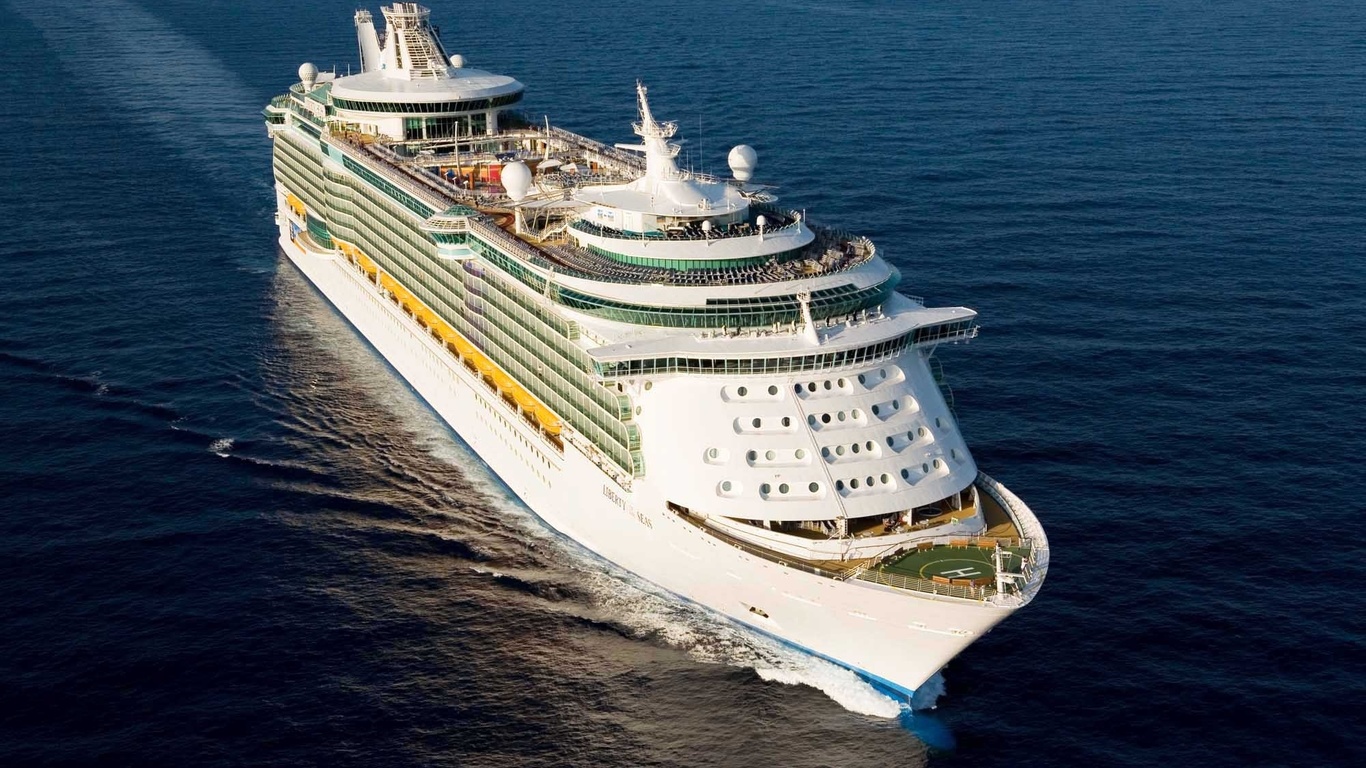
Uma violação pura da lei da física são máquinas enormes voando alto no céu e carregando centenas de pessoas a bordo. Séculos atrás, As pessoas nunca teriam acreditado nisso, e a visão de objetos voadores no céu teria testemunhado mais habilidades metafísicas do que motores. O mesmo acontece com enormes navios e cruzeiros.
Deve ser muito simples. Quando mergulhamos um objeto pesado na água, ele afunda. Mergulhamos a moeda na água e ela afunda. Se pularmos na água sem saber nadar, também nos afogaremos. Por outro lado, enormes navios e cruzeiros com centenas de metros de comprimento e pesando vários milhares de toneladas podem durar muito tempo.
Viajar em navios de cruzeiro tornou-se muito popular, especialmente nos últimos anos. Não é mais uma atividade apenas para pessoas ricas. Pessoas comuns também podem pagar um cruzeiro. Segundo as estatísticas, mais de 25 milhões de pessoas navegam anualmente. Este não é um número pequeno e está em constante crescimento.
É também um enorme paradoxo que um dos eventos mais tristes da história e um dos maiores desastres tenha contribuído muito para a indústria de cruzeiros em primeiro lugar. Estamos todos familiarizados com o navio de cruzeiro Titanic mais popular do mundo. Se você não conhece a história, deveria pelo menos ter assistido ao filme. A história do Titanic é muito triste e triste, pois muitas pessoas morreram devido a um acidente de iceberg. No entanto, no final, tornou-se um dos eventos históricos mais famosos e uma das maiores motivações para continuar a desenvolver ainda mais a indústria de cruzeiros.
Cruzeiros podem ser enormes. Às vezes, eles podem exceder várias centenas de metros de comprimento, e isso não é incomum. Eles transportam centenas de pessoas, suas bagagens, equipamentos, mesas, camas, chuveiros, Água e motores. No geral, o peso do cruzador pode ser superior a alguns milhares de toneladas. Esse é um número enorme, especialmente quando comparado a uma pequena moeda que pensa imediatamente na água assim que você a joga.
No entanto, outras questões surgem aqui, você já se perguntou como o velho colocou uma mensagem em uma garrafa e ela não se afogou, mas, pelo contrário, o mar carregava uma garrafa. Ou você pensou em uma bola de vôlei? É muito leve, mas mesmo que entre na água, nunca afunda, flutua. Você já pensou em um homem deitado de costas nadando na água? Por que isso acontece e se a física se aplica à água, por que existem grandes exceções?
Artigos populares
Não há muito mistério aqui, mas há ar. O ar é o componente mais alto que pode ser encontrado em qualquer objeto, e é o ar que torna outros objetos mais leves e lhes dá a capacidade de passar para algo que age contra certas leis. Para ser mais preciso, tentarei explicar o motor e toda a estrutura do Cruzeiro.
O tamanho do navio é calculado com base em sua tonelagem. No entanto, é mais uma medida de volume do que Peso. Isso significa que a tonelagem é determinada pelo interior fechado do navio. A tonelagem de um navio é medida pela quantidade de água que ele mostra.

Primeiro de tudo, deve-se notar que apenas 10% de todo o navio está debaixo d'água. Obviamente, a parte mais pesada de todo o navio, que é o motor, está exatamente dentro desses 10%. Apesar de uma altura aparentemente inviável em relação ao volume abaixo da linha d'água, o centro de gravidade é mantido baixo, pois o equipamento mais pesado fica abaixo do convés. Há também tanques com resíduos e combustível, bem como água potável. Existem tanques de lastro contendo água que pode ser bombeada de uma extremidade da embarcação para a outra e da esquerda para a estibordo para manter o equilíbrio e a estabilidade de todo o casco.
Agora vem toda a física. Um navio de cruzeiro desloca uma quantidade de água equivalente à sua própria massa. A pressão do mar pressionou o casco do navio para resistir à força descendente da massa do navio. Ao contrário do ar, a água não pode ser comprimida, de modo que a força combinada cria flutuabilidade. Este princípio foi descoberto pela primeira vez por Arquimedes há 2.300 anos.
A água que o navio de cruzeiro desloca torna-se ondulada e lavada à medida que você se move. Para criar flutuabilidade, é preferível um corpo arredondado em forma de U. Alguns navios têm um fundo plano. Eles também podem permanecer à tona por muito tempo, com a única diferença de que se sentirão desconfortáveis se movendo em mares pesados.
Embora o princípio básico de um navio de cruzeiro seja permanecer à tona, todo o núcleo deve ajudá-lo a cumprir esse princípio. A forma de U é essencial para a resistência a obstáculos como rochas, bancos de areia, Cais de concreto, bem como icebergs. No interior, uma série de compartimentos individuais com portas automáticas à prova d'água impedem que o gabinete encha completamente com água. No Titanic, esses compartimentos não atingiram altura suficiente e a água transbordou de um para o outro.
Houve outros casos desagradáveis com navios de cruzeiro. Alguns foram causados por mau funcionamento do motor, enquanto outros foram causados por decisões erradas e mau funcionamento do capitão. Um desses casos é a Costa Concordia. O destino do navio e os 33 homens a bordo foram determinados pela decisão do capitão de navegar muito perto das rochas. Neste momento, vários compartimentos caíram de uma só vez, e a tentativa do capitão de virar o navio levou ao fato de que ele se inclinou, o que levou a tristes consequências.
Outro objetivo muito importante dos compartimentos à prova d'água é evitar incêndios a bordo. No mundo de hoje, deve haver menos medo do iceberg, pois a propagação do fogo parece muito mais realista.
Embora navios e cruzeiros tenham se tornado muito populares e muitas pessoas os visitem anualmente, certas regras e mudanças foram introduzidas, tanto no nível do Governo quanto no nível do motor, para tornar as viagens mais seguras e confortáveis. Então, da próxima vez que você pisar a bordo, você deve saber por que o navio não pensa e permanece à tona. E se você, como eu, tem medo de velejar, lembre-se de que a probabilidade de um acidente ou colisão de um navio com um iceberg é menor do que a probabilidade de você ter seu próprio iate nos próximos cinco anos.
